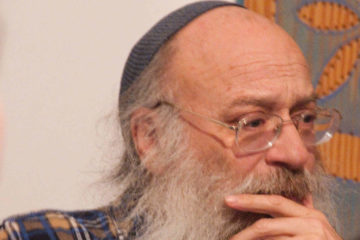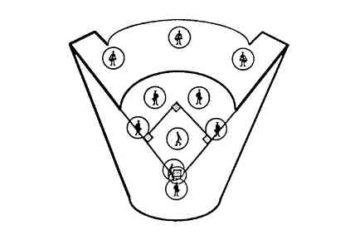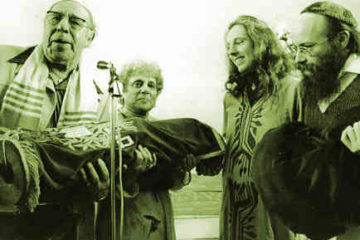INTRODUCTION
In advance of the Aquarian Minyan’s 36th anniversary celebration Shabbaton at Chochmat HaLev in Berkeley on June 25-26-27, 2010, Rabbi Diane Elliot asked me to prepare something for the Friday night service of 8 to 10 minutes duration. As it is my custom to give over a few words on the parashah at such times, I wrote the following midrash.
I introduced it by pointing out that no one is adequately prepared to be touched by the divine, and that the children of Israel were no exception. I explained that the parshiot of this season describe how over and over again the capacity of the people to live up to the revelations they had received were exceeded by the revealed light. They kept butting up against their limits and had to undergo purification in order to grow and be fit to receive new revelations.
I also pointed out that the Baal Shem Tov was told by Heaven to reveal his light at the age of 36, and that he, like Moses was at first reluctant to assume the mantle of leadership. According to the story that has come down to us, when he told his wife that he had been ordained as the leader of his generation, she asked, “What shall we do?” He replied, “We must fast.” As I read in Martin Buber’s collection, Tales of the Hasidim: Early Masters, they lay on the ground for three days without eating or drinking. I picture them on their backs, with their palms open. At the end of the three days, the Baal Shem Tov said, “If this is Heaven’s decree, we must comply.” They arose, and he assumed his duties.
I suggested that the Minyan, too, might have reached the level from which its light could freshly emanate, inasmuch as the community had been refined by repeated crises and had survived. In other words, perhaps the time had come for its regeneration. This midrash is a symbolic retelling of a portion of its history.
— A Midrash —
In the days long ago, when the stories in the Bible weren’t written down yet, when the experiences of our ancestors were fresh and immediate, not yet the stuff of legend or paradigmatic models of positive or negative behavior, our tribes encountered a mighty prophet, Bilaam, a gentile, but one with a direct pipeline to the Almighty. He had been hired by Balak, the Moabite King, to curse us.
Now in those days, our tribes were still fairly distinct from one another. Not much intermarriage had yet taken place, nor had any land been distributed. Each tribe had its own camp and marched toward the Land of Promise in set divisions and formations.
In addition, each tribe had already acquired characteristic traits. Issachar, for example, was described by our forefather Jacob as “a strong-boned donkey,”and Naftali as “a deer running free.” Nowadays, even though the tribes have merged, to a great extent, some of these characteristics persist among our people.
Now we know that HaKodesh Baruch Hu did not approve of Balak’s request that Bilaam curse the children of Israel, nor of Bilaam’s greed when offered much gold and honor, despite his protestations that he would only utter what God had put in his mouth. God showed his displeasure by sending an angel with a drawn sword to stand in Bilaam’s way as he rode along on his donkey.
The donkey saw the angel and shied away, but Bilaam did not see it and beat the poor animal, whereupon the donkey opened her mouth and protested, “What have I done to you that you beat me these three times?”
Bilaam, quite infuriated, shouted, “You have been playing games with me!” He even said, “If I had had a sword in my hand just now, I would have killed you!”
His donkey pleaded, “Am I not your old donkey? You have been riding on me as far back as you remember. Have I every been in the habit of doing this to you?”
Bilaam replied, “No.”
God then gave Bilaam the ability to see, and he perceived the angel standing in the road, with a drawn sword in his hand. Like most people who see an angel with a raised sword upbraiding them, Bilaam straightened up fast. He asked, humbly, whether he should continue his mission or turn back. The angel told him to go ahead, provided that he really only uttered the words that God would put into his mouth.
God really wanted him to go on this journey, but only with the right attitude. His ulterior motives were not sound, for he had been tempted by the promise of much wealth and great honor should he say the words that the King wanted to hear.
Now this part of the story is pretty well known — and yet it never fails to surprise and to please its readers and listeners. After all, the most surprising thing about the story is not that the donkey spoke, but that Bilaam didn’t notice anything unusual about it. Well, maybe was a bit of a Shaman as well as a prophet, and altered states were a common experience for him.
Anyway, back to the tribes of Israel and their particular characteristics. Issachar was like a donkey, strong but stubborn, patient but determined. We learn from Reb Shlomo that Issachar, who is associated with Iyar, the month of Counting the Omer, the month of Pesach Sheni, that Issachar always knows what time it is. The ArtScroll commentary notes that “two hundred heads of [the] Sanhedrin came from this tribe.” One of their specialties was establishing the cycle of leap years, thus regulating the calendar. Issachar is a steady, reliable bearer of burdens, an essential component of Jewish nationhood. If this story is in large part about a talking donkey, it’s also about a braying minyan.
A braying minyan always knows what time it is. It knows when to start davening, when to light candles, when it’s time for silence, where in the service the Kaddish may be recited, and which broches are appropriate for each occasion.
But there’s another tribe that’s part of our heritage, the tribe of Naftali, the graceful free-running deer, the founder of the playing minyan. Naftali loves to improvise, to dance, to gambol, to utter ecstatic strings of words, which are sometimes regarded as poetry or spontaneous mantras. The playing minyan and the braying minyan would seem not to have a lot in common. And yet these tribes and the other 10 tribes were destined to coalesce into one nation, just as the 13 original colonies did.
But before that could happen, they had to travel their separate trajectories, reach their own limits, hit their own dead ends, and realize how much they needed each other. Let’s see how their different journeys got played out in this parashah.
Oy vey! There’s more to this parashah than the episode of the talking donkey and the blessings that Bilaam was obliged to confer on us.
Let’s imagine a comparable situation today and project it backwards in time, to the era of our ancestral desert wayfarers.
How does the braying minyan daven? They light candles on time, they daven the same melodies as the previous week and the week before that — in fact, without the melodies they would have a hard time remembering the words properly. They bray and bellow — not always on key — stamp their feet, bump into each other good-naturedly, end early enough to have a good meal, and then they go to bed, always before midnight, and rest very well.
The playing minyan comes together with a quick, light step; they greet each other with lavish and extravagant terms of endearment; they pour forth profuse words of blessing, and race around in giddy circles proclaiming their oneness. At the end, they say, “That was a great service! Want to go clubbing?” A second one asks, “Who’s playing?” “The Midianites!” another one cries, and they race off to the nearest tent to hear the renowned stars perform their unique ethnic songs and exotic tribal dances. “What a treat!” they say. “Maybe we can bring some of this vitality into our worship circle.” “Oh, those braying donkeys would never let us do that.” “We can form our own herd. We’re wild! Not like those domesticated donkeys — so staid and conservative.”
We learn from the Midrash that the Midianite girls lured the Hebrew boys into joining their rites; rites which included heaving excrement at the statues of their gods. The poor boys, caught up in the frenzy, and thinking that God would approve of this desecration, did not realize that this was the form of worship actually employed by the Midianites. God punished them for their idolatry, just as the angel would have killed Bilaam and spared his donkey, had the donkey not saved her master’s life by turning aside.
Sof, sof, the tribes recognized that they needed to learn from one another how to worship the Creator correctly. After all, they reasoned, we’re all quadrupeds, even though some of us have split hooves (and split personalities) while others have solid hooves and one-track minds.
And that’s how the deer, Naftali, learned to bray, and the donkey, Issachar, learned to play, like the deer and the antelope play. Together, they were finally able to PRAY.


